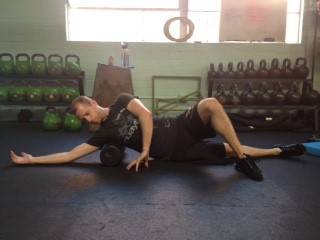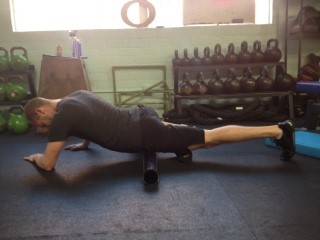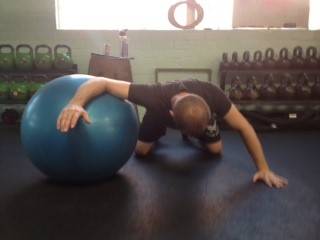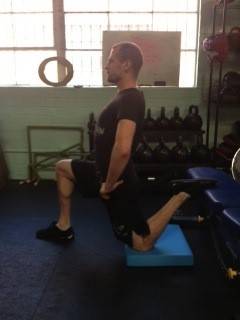Today I am going to talk about something that every person can benefit from: how to prevent injury. I have been a coach for several years and I have seen and personally experienced numerous injuries. I hate getting hurt, but one thing I hate more is to see my students, friends, and fellow classmates sustain an injury, especially when it could have been easily prevented. That being said, the risk of injury will always be present when you participate in a sport or event with unforeseen variables. My goal with this article is to help you minimize the risk of injury so you can keep doing what you love to do.
Injuries occur for many reasons and I am not going to take the time to explain every single possible scenario, as that would be impossible. Instead, I’d like to focus on three factors that need to be in balance in order to prevent injuries: flexibility, mobility, and strength. These three qualities are the foundation for anyone looking to become more athletic, from the seventy-year-old grandmother to the 22-year-old elite athlete. They are the base on which you build your success. When one of these three factors is out of balance, it makes a very inviting environment for an injury to occur.
Lets start with the easiest factor to address: strength. Strength is a relatively easy skill set to attain. A basic strength and conditioning program followed several times a week under the guidance of a trained professional can improve your level of strength quickly, especially if you already practice a sport that promotes the development of strength, such as Brazilian jiu jitsu or wrestling.
The second factor is mobility, which is the ability to move a limb or joint through a full range of motion with control. Mobility work is voluntary and requires strength to perform the action, while flexibility is usually a more passive skill that involves static holds to elongate the body’s muscles. Both mobility and flexibility are important skills for any athletic person to possess, but unfortunately the development of these skills is often neglected during training. The more mobile an individual is, the more easily and freely they can execute their intended task. Whether it be throwing a roundhouse kick, passing guard, or just picking up a bag of groceries, greater mobility will always equal improved performance.
Every person is going to have unique mobility issues. To combat them, I highly suggest meeting with a professional and educating yourself on how to properly treat your specific condition. Some of the more common mobility issues I see frequently at the gym involve impingement of the hips and shoulders. Both jiu jitsu and muay Thai place heavy demand on these joints and the muscles that surround them.
One great way to improve mobility is through myofascial release and various exercises specifically designed to target the proper movement of a joint or limb. Below are two ways to increase the mobility of your hips and shoulders.

1. Myofascial release for the shoulder girdle
Start laying on your side with a foam roller placed above your hip. Slowly roll up towards your shoulder while applying pressure onto the roller. When you feel tightness, stop, take a few deep breaths, and rock side to side to loosen up the connective tissues. Then continue your way up into the armpit. Once you reach the armpit, slowly roll a few inches from side to side to grind out any tension hidden in surrounding musculature. Repeat on the other side.

2. Myofascial release for the hip flexors
Start lying on the ground with either a lacrosse ball or a PVC pipe placed in the middle of your thigh. Slowly roll up towards your hip while frequently stopping to rock back and forth to grind out the tension. Once you reach the hip, roll onto your side and apply pressure to the TFL (tensor fasciae latae) located between the front of your hip and your glutes.
The third factor is flexibility, which refers to the range of motion in a joint and the length of the muscles that cross the joints. The specific sport or activity you like to do will determine the optimal level of flexibility you need. Remember flexibility should be treated as a goal and something to be trained and improved with time. Granted, if you’re so tight you can’t touch your toes, rhythmic gymnastics might not be the sport for you, but just because you are naturally tight doesn’t mean you can never attempt a sport. Below are two stretches that can can increase the flexibility of the hips and shoulder.

1. Stretching the chest and shoulders
Start by placing your hands and knees on the ground with one elbow resting on a Swiss ball. Allow your chest to fall to the ground while reaching away from your center with the supported elbow. Think about creating separation in your shoulder socket while holding the stretch. Hold the position for 45 seconds, shake the arm out briefly, then repeat on the same side.

2. Stretching the hip flexors
Assume the same stance as you would for a split squat, with one knee resting on a pad for some added comfort. Flex your glutes and slowly press your hips forward while maintaining the contraction of the glutes. Hold the contraction for five seconds. Relax the glutes and allow the hips to fall forward. Repeat two or three times until the hips have ceased forward movement once the contraction is released.
Practice these stretches several times a day and see how your flexibility improves. If you have any questions, please don’t hesitate to ask in the comments below.






